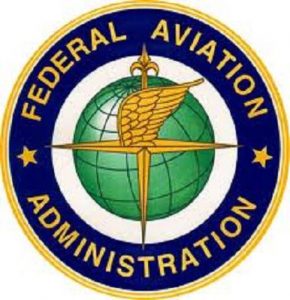Successfully completing a check-ride and obtaining an airman certificate are just the beginning. As a pilot, continuing education and learning is essential to ensure that operations are conducted safely and legally. In some instances, simply reading the applicable regulations is not enough.
Many of the Federal Aviation Regulations found in 14 C.F.R. Parts 1-399 (“FAR”) are not written very well. They may be ambiguous or confusing. And FAA’s interpretation of these regulations may not be as straightforward as we would like. In some situations, in order to understand the privileges and limitations associated with an airman certificate or a proposed flight operation, it is necessary to look beyond the written regulation.
 In addition to the actual verbiage of the FAR, the meanings and scope of those regulations are further defined and prescribed by applicable case law, legal interpretations issued by FAA’s Office of Chief Counsel (“Legal Interpretations”), and FAA guidance (orders, notices, advisory circulars etc.). If you simply rely solely upon the language in the regulation, you could find yourself in trouble.
In addition to the actual verbiage of the FAR, the meanings and scope of those regulations are further defined and prescribed by applicable case law, legal interpretations issued by FAA’s Office of Chief Counsel (“Legal Interpretations”), and FAA guidance (orders, notices, advisory circulars etc.). If you simply rely solely upon the language in the regulation, you could find yourself in trouble.
For example, unless you are one of those lucky few for whom the cost of flying is not a concern, those costs, and mitigation of those costs is an ever-present concern. Unfortunately, the regulations limiting how you might be able to legally mitigate the cost could be written more clearly. Thus, further research and education is needed beyond the regulations.
Private Pilot Cost Sharing
One of the ways a private pilot may reduce the cost of a particular flight is to share that expense with the passenger(s) on the flight. However, a private pilot may not receive compensation for flying persons or property for hire in excess of what is allowed by the FAR. FAR 61.113(a) provides that “no person who holds a private pilot certificate may act as pilot in command of an aircraft that is carrying passengers or property for compensation or hire; nor may that person, for compensation or hire, act as pilot in command of an aircraft.”
Fortunately, this is not as complete a prohibition as it appears. In addition to other exceptions, Paragraph (c) of the regulation states “[a] private pilot may not pay less than the pro rata share of the operating expenses of a flight with passengers, provided the expenses involve only fuel, oil, airport expenditures, or rental fees.”
So, what does this really mean? Well, reviewing Legal Interpretations, decided cases, and FAA guidance reveals that the fuel and oil consumed on a flight and ramp or tie-down fees at the destination airport can be shared on an equal basis by the pilot and his or her passenger(s). Or, if the aircraft is rented from an FBO or other third-party, the hourly rental fee plus the cost of fuel, if that is not included in the rental fee, can be shared by the pilot and his or her passenger(s). Indirect expenses such as insurance, maintenance, depreciation or other capital costs (e.g., costs of ownership) cannot be shared.
With respect to the method for calculating the amount the pilot and passenger(s) must each pay, according to the FAA it is not necessary that a mathematically exact division of each operating expense is calculated. However, if the pilot pays less than an equal share of the total operating costs or flight, the FAA will assume the pilot was not actually sharing expenses. Not a particularly precise position, I know, but it at least provides some guidance. In general, divide the total allowed costs for the flight by the number of people in the aircraft during the flight and the result will be the amount that each person must pay.
Finally, keep in mind that in addition to equal sharing of the cost of the flight, the pilot and passengers must have a common purpose for the flight as well. That is, they must be flying to the same destination for a common reason. A pilot may not carry expense sharing passengers to a destination at which he or she has no particular business. Also, a pilot may not share the expenses of a private flight with his or her passenger(s) if the pilot’s purpose is to merely build flight time or get flight instruction, unless that is the purpose of the passenger(s) as well (which is usually not the case).
Thus, in order to fully understand the privileges and limitations of a private pilot in this context, simply reading FAR § 61.113(a) is not enough. Further research and investigation are needed to learn the scope and applicability of this regulation.
Commercial Pilot Limitations
Another similar example where the regulations by themselves do not provide a full explanation for pilots relates to the privileges and limitation of a commercial pilot certificate. Many people, both pilot and non-pilot alike, think that if a pilot has a commercial pilot certificate he or she can get paid for flying.
In many instances, a commercial operator certificate is needed in order for the commercial pilot to be able to legally accept compensation, whether monetary or otherwise, for flying. However, a commercial pilot’s receipt of compensation for flying persons or property for hire is not without limitation.
FAR § 61.133 provides that “[a] person who holds a commercial pilot certificate may act as pilot in command of an aircraft (i) Carrying persons or property for compensation or hire, provided the person is qualified in accordance with this part and with the applicable parts of this chapter that apply to the operation; and (ii) For compensation or hire, provided the person is qualified in accordance with this part and with the applicable parts of this chapter that apply to the operation.”
This language is broad and appears to authorize a commercial pilot to fly for compensation or hire with minimal limitation. But, before a commercial pilot accepts payment for his or her flight, further analysis is necessary to make sure that this privilege is not limited by some other part of the FAR.
Further review of the FAR leads to FAR Part 119 which requires that a pilot who operates a flight carrying persons or property for compensation or hire do so pursuant to a commercial operator certificate. The most common of these certificates are the Part 121 (airline) and Part 135 (on-demand charter) certificates. Although this rule appears to require a commercial operator certificate for all flight operations in which the commercial pilot is flying for compensation or hire, fortunately, this is not the case.
The Part 119 requirement for a commercial operator certificate is qualified. A variety of flight operations are specifically excluded from this certificate requirement. The exclusions in FAR § 119.1 include flight instruction, nonstop sightseeing flights, ferry or training flights, crop dusting, seeding, spraying, and bird chasing, banner towing, aerial photography or survey, firefighting and powerline or pipeline patrol, to name a few. A commercial pilot can receive compensation for these flight operations without having a commercial operator certificate.
And while these exclusions are specified in the regulation, the regulation is silent as to any definition or explanation of what they mean. Some of the exclusions, such as flight instruction, are fairly straightforward with respect to what is allowed and not allowed. Yet, even with flight instruction, a commercial pilot who is receiving compensation for flying must be certain that he or she is clearly operating within the parameters of the FAR relating to the flight operation at hand. Here again, it is necessary to dig deeper and review Legal Interpretations, FAA guidance, and case law to understand what conduct is and is not permitted.
Logging of Flight Time
 A final, although by no means the only other example of the need to go beyond the regulation exists in the context of logging PIC and SIC flight time. FAR § 61.5l(e)(l)(i) states, in relevant part, that a sport, recreational, private, or commercial pilot may log pilot in command (“PIC”) time for the time during which that pilot is “the sole manipulator of the controls of an aircraft for which the pilot is rated or has privileges.”
A final, although by no means the only other example of the need to go beyond the regulation exists in the context of logging PIC and SIC flight time. FAR § 61.5l(e)(l)(i) states, in relevant part, that a sport, recreational, private, or commercial pilot may log pilot in command (“PIC”) time for the time during which that pilot is “the sole manipulator of the controls of an aircraft for which the pilot is rated or has privileges.”
When referencing aircraft controls, the FAA’s guidance and Legal Interpretations refer to flight control systems, such as the yoke, rudders, power, trim, yaw dampener, auto-pilot, etc. These systems control the flight of the aircraft, which is in contrast to communication and navigation radios, and other systems within the aircraft that do not directly control the aircraft’s flight.
FAA’s view is that a pilot logs flight time primarily to qualify for or maintain an airman certificate or rating. While a pilot may wish to keep track of other flight time (e.g., “ride-along” time where the pilot is neither a required crewmember or the sole manipulator of the controls), that time is not flight time that should be logged with the flight time a pilot maintains for qualification or currency purposes. If the pilot chooses to keep track of time that is not for purposes of qualification or currency, that time should be maintained separately from time logged for FAA purposes.
Conclusion
Keep in mind that Legal Interpretations and FAA guidance do not replace the applicable regulations. Rather, they express the FAA’s interpretations and positions with respect to the meanings of the regulations and how they apply in various contexts.
So, when you find yourself with questions regarding what is and is not permitted under the regulations, I encourage you to do your research and go beyond the letter for the particular regulation. And if your research doesn’t answer your questions, an experienced aviation attorney can always assist.
Not only is your certificate a license to fly, but it is also a license to learn. Make the most of it.
The post Reading the Regulation Isn’t Always Enough appeared first on Shackelford, McKinley & Norton, LLP.
Shackelford, McKinley & Norton, LLP
